Frank West is an amazing British game designer. I have enjoyed several of his games, a few of which appear at the top of my list of favorites. I managed to stumble onto Race for the Raft, spurring my desire to delve deeper into the man and his collection of games. So let’s look at this chapter of the cats stranded on an island after Vesh has arrived and started wreaking havoc.
The Story So Far
Race to the Raft is a game that takes place shortly after the events of The Isle of Cats. There is no need to own or be familiar with that game, but the story and the situation are enhanced with a little understanding. In The Isle of Cats, you and the other players spend five days on boats doing all you can to rescue as many cats on the island as you can prior to the arrival of the villain, Vesh. Race for the Raft takes place not long after as Vesh is setting fire to the island. In this game, you are on the island and you have a raft at one end; on the other are stranded cats. You need to create a path along which the stranded cats can travel to the raft and to safety.
The Isle of Cats is a competitive game, while Race for the Raft is cooperative. Both involve their own versions of a polyomino puzzle, but they have very distinct play styles and methods of dealing with the situation at hand.
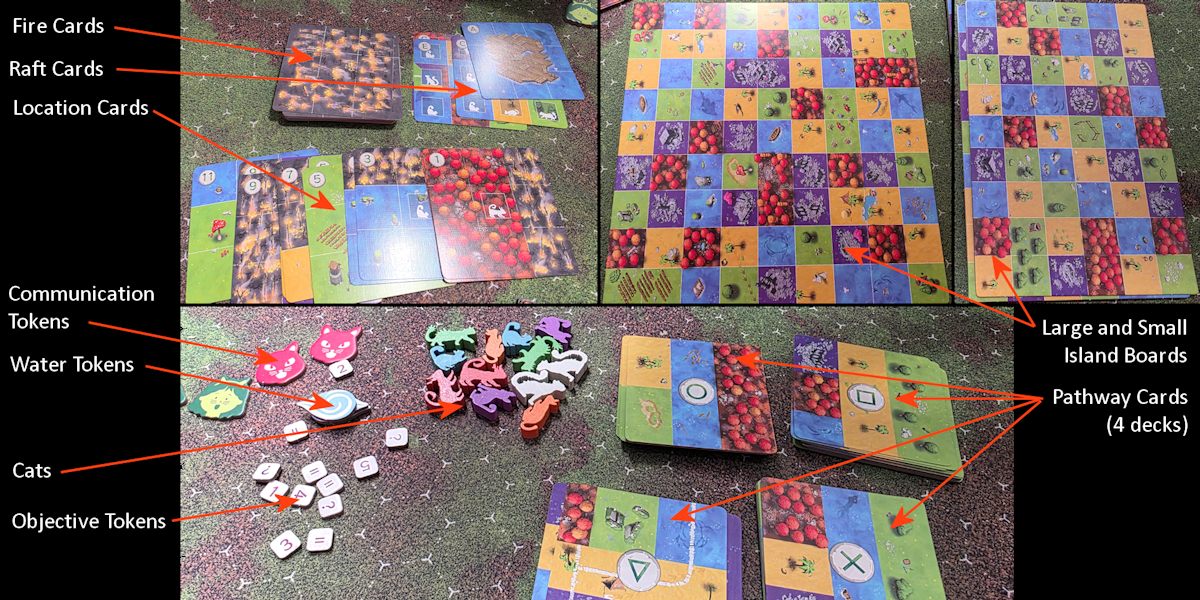
An Island on Fire
Race to the Raft includes a scenario book with more than 80 scenarios which are part of a dozen campaigns. Given that the island boards (see above) are all double sided and can be rotated, you will almost never encounter the same setup twice. Each scenario has its own diagram explaining how to set the island up for the game. For example, this is the diagram for Tutorial Scenario #1: First Steps.
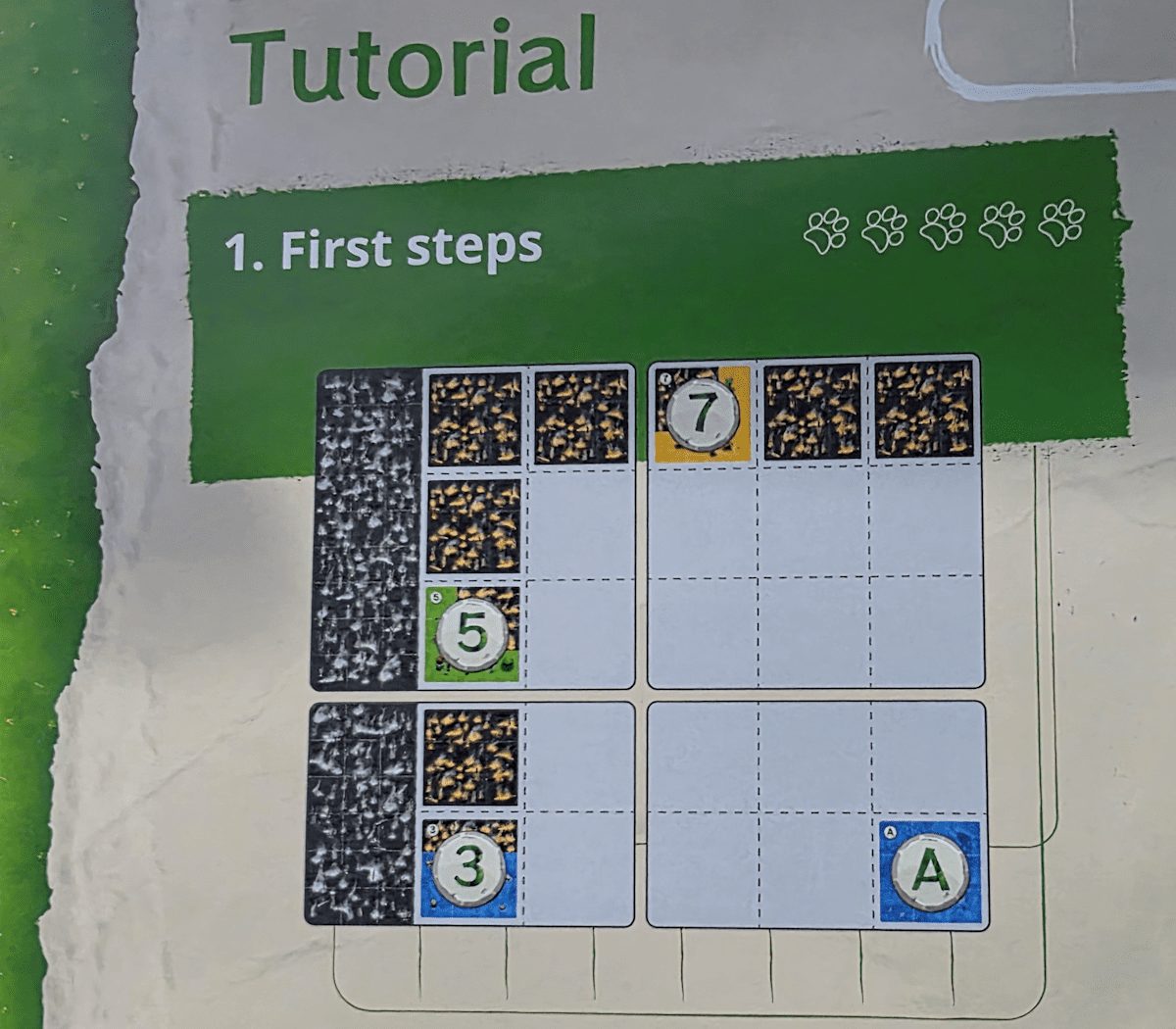
This diagram explains that the setup for the scenario is as follows:
- Place two large island boards side-by-side. The one on the left should be on the side with a row of fire along the entire left edge.
- Below this, place two small island boards side-by-side. The one on the left should be on the side with a row of fire on the entire left edge.
- Place three fire cards on the upper-left island board as shown.
- Place location card 5 on the upper-left island board as shown.
- Place location card 7 on the upper-right island board as shown.
- Place two fire cards on the upper-right island board as shown.
- Place a fire card on the lower-left island board as shown.
- Place location card 3 on the lower-left island board as shown.
- Place raft card A on the lower-right island board as shown.
- Place a cat of the appropriate color on each location card.
The rest of the setup is common to all scenarios:
- Shuffle the four pathways decks and set them near the island.
- Place the fire bag with the fire tokens near the board.
Ah yes… the fire bag.

The fire bag contains a number of fire tokens, polyomino pieces that will expand the existing fires on the island as you play.
Once this is done, you are ready to play. Note that as you move into the later scenarios and campaigns, more components, options, restrictions, and so on will be added to the game. The game remains fundamentally the same, but the solutions to the puzzle become more complex.
Saving the Stranded Cats
A round of Race to the Raft is deceptively simple. It consists of three steps:
- Drawing Cards—each player draws three cards from the four pathway decks. They may select cards from any deck they wish. Each deck is identified with a shape (circle, cross, triangle, and square). They each have an image on the back, which identifies the overall ratio of spaces on the cards. For example, the circle deck has about one-third red-cat paths, about one-third blue-cat paths, about one-sixth orange-cat paths, and about one-sixth green-cat paths. There are no purple cat paths in that deck. This is not a guarantee for any given card, but the distribution of spaces throughout the deck.
- Playing Cards—in any order, players may play cards. Cards are used for one of two purposes: adding pathways or moving cats.
- To add a pathway, a card is placed over some area of the island. The card must be fully on the island and may be rotated in any way. Cards can overlap previously placed cards, but may not overlap fire spaces, spaces occupied by a cat, or any part of the raft card. A card must be placed on top and may not be placed under another card.After adding a pathway, the acting player draws a random fire tile from the fire bag and places it on the island. This tile has the same placement rules as pathway cards, with the additional restriction that the tile must be adjacent to at least one space of fire already on the island.
- To move a cat, a card is discarded and the cat is moved any number of spaces along a path corresponding to the color of the cat. After moving a cat, it is set on its side to indicate it is exhausted. An exhausted cat can be moved again, but this requires discarding two cards instead of just one.After moving a cat, if the discard pile has 4+ cards in it, remove four cards from the pile (place them in the box) and the acting player draws a random fire tile from the fire bag and places it on the island, as above.
- Resting—After all pathway cards have been played (they must all be played), stand up any cats on their sides (they are no longer exhausted). Check the winning and losing conditions; if neither have been met, begin a new round.
The game is won if all the cats have reached the raft. The game is lost if there is no valid place to put a selected fire tile, a cat has no possible way of reaching the raft (e.g., surrounded by fire), the fire bag is empty, or the players no longer have enough pathway cards for each draw three.
Lack of Communication
If you look closely at the gameplay above, you will not see all that is going on here. That is because I have left out one very important piece of information: when you can and when you cannot communicate in the game.
In step 1, players may discuss the types of cards they may or may not be drawing. Once the first card is drawn, players may no longer speak or communicate in any way until all cards have been drawn for the round.
In step 2, players may not discuss the particulars of the cards they have drawn. They can indicate that they have “X cards that are good for the Orange cat” and such things. No specifics about the cards themselves are legal to share. Additionally, once players have agreed a particular player is to act next, all discussion stops until they have completed their action (including drawing and playing any fire tokens triggered). Once they have completed everything for their action, only then can discussion resume.
This may seem odd, but this might just be the best set of rules I have ever seen to stop the problem of quarterbacking (i.e., the state of a cooperative game where one player dictates what the others do, effectively turning the game into a solo affair). These rules make things tense in just the right ways.
Additional Rules
As you progress through the tutorial scenarios and the practice scenarios, more rules and components come into play:
- Communication Tokens—one-time use tokens that can allow a player to speak (Talk Action token), or “meow” to attempt to get a point across (Meow Action token) at a time when discussion is not normally allowed. The Meow Action is especially fun.
- Water Tokens—one-time use tokens that allow a player to remove a fire token from the island. Using them will cost you points at the end of the game, but may just allow you to complete the scenario.
- Objective Tokens—tokens placed on the island to indicate certain restrictions the scenario dictates. For example, the scenario might indicate that a particular cat needs to get off the island first, or even third. Winning the game means adhering to these restrictions (i.e., if the cats are rescued in the wrong order, you have lost the game).
…and so on.
A Look at a Game: Start and Finish
This is the starting setup for Tutorial Scenario 3:

When my wife and I played this scenario, this is what it looked like after we saved all the cats:
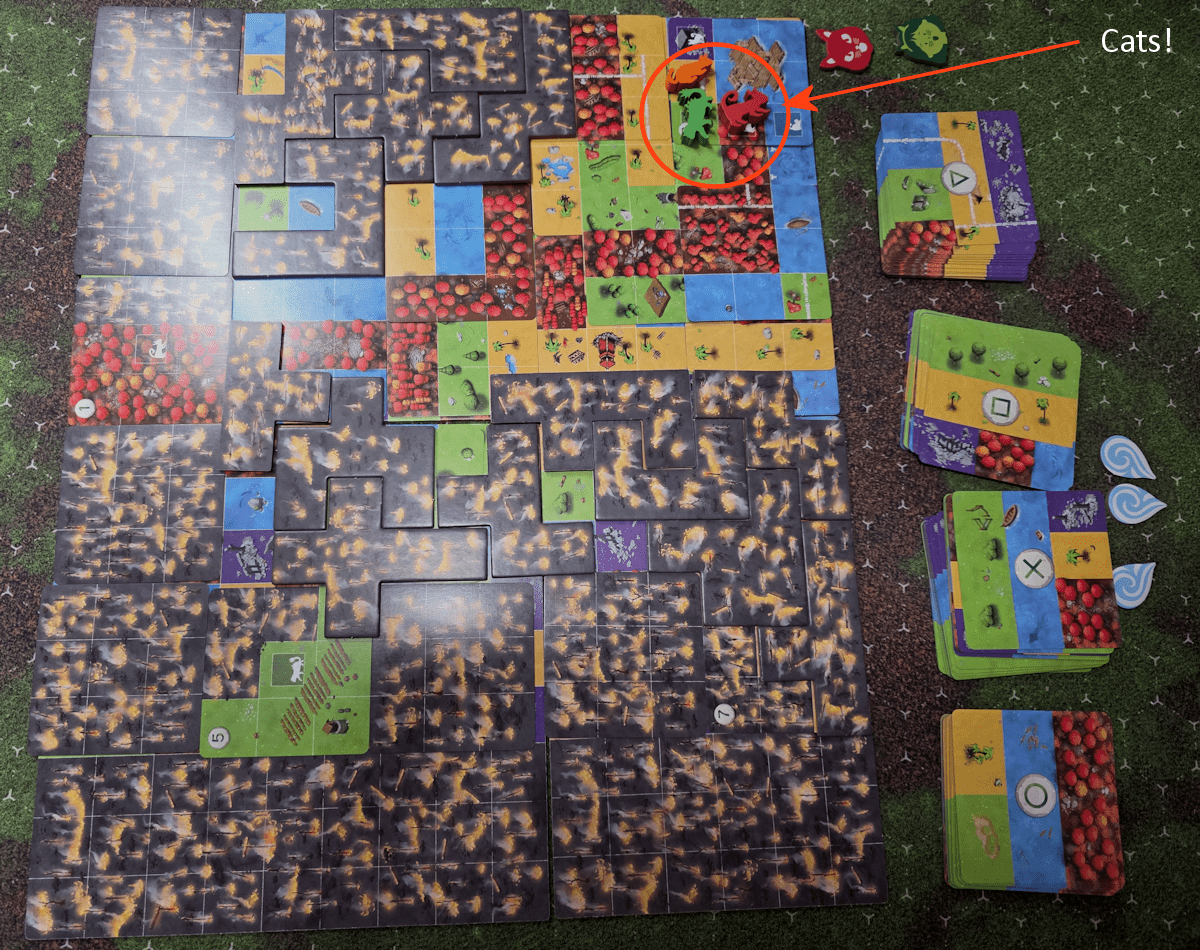
As you can see, most of the island is on fire. We managed without the communication tokens being used; we managed without needing to use the water tokens. We did well. But this scenario has a difficulty rating of 0 out of 5. All but the final tutorial scenario has this same difficulty. Later scenarios are… well, they get tricky. All of them are fun and infinitely replayable.
Final Thoughts
I grow more and more enamoured with Frank West with each game of his I discover, and with each game of his I play. This one is a wonderful cooperative experience, a style of play my wife loves. If my wife and I want to play a competitive game in Mr. West’s world, we will grab any of several games such as The Isle of Cats or Vadoran Gardens. If we want a cooperative puzzle to solve together, we will delve into the Race to the Raft.
If cooperative games are not your thing, you will want to steer clear of this one. There is no competitive mode, and to be honest, I am not sure how you could create one without buying two copies of the game and playing simultaneously, or something to that effect. If cooperative play is something you and someone in your game group enjoys, then this is a great buy!
I am hoping for at least one or two expansions. I would love to see more island boards, additional scenarios and campaigns with new options and components. I would even like to see some special fire tokens be added (e.g., ones that have some other effect when they are pulled). There are certainly things that can be done here to continue this game’s development. All that said, the game does not truly need such things—it plays perfectly as it is. Just saying, I can see my wife and I getting through all the scenarios by the end of the year, or within the first couple of months of next year. Sure, we can replay any of the older scenarios, but like a legacy game, having some hidden components that are unlocked as you move through some advanced scenarios could be a blast.
As I said, I grow more and more enamoured with Mr. West and his games. I have gotten a copy of Emberleaf and will dive into that one soon. I am looking into the various versions of The City of Kings – once I figure out which one is best for me, I will be getting a copy of that as well.
In the meantime, I have several of his games, and still have some 70 scenarios of this little gem to keep me busy.





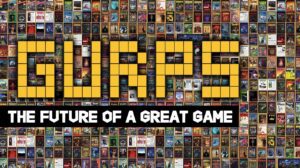





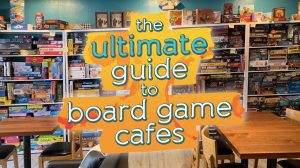
Add Comment